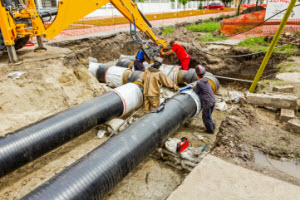OSHA says the deaths of two employees in a tragic trench accident could have been prevented if a drain cleaning company had provided basic safeguards and training.

roman023 / iStock / Getty Images Plus / Getty Images
The Boston area contractor, which was cited and fined for similar hazards in 2007 and 2012, was recently cited for 18 alleged violations of OSHA standards, with proposed fines of $1.5 million. In February, a county grand jury indicted the company and its owner on two counts of manslaughter and other charges in connection with the deaths.
According to OSHA, the two workers died in October 2016 when the 12-foot-deep trench in which they were working collapsed. As a result, an adjacent fire hydrant supply line broke, filling the trench with water in a matter of seconds.
Noted OSHA’s New England Regional Administrator Galen Blanton, “The deaths of these two men could have and should have been prevented.” Despite knowing what needed to be done, the employer chose to ignore its responsibility, he stated.
An OSHA investigation found that the drain service company and its owner, who oversaw the work on the day the fatalities occurred, failed to take required actions, including:
- Installing a support system to protect employees in the trench;
- Removing employees from the hazardous conditions in the trench;
- Training workers in how to identify and address trenching and excavation hazards;
- Providing a ladder at all times so employees could exit the trench;
- Supporting structures next to the trench that posed overhead hazards; and
- Providing employees with hardhats and eye protection.
Because the walls of an unprotected trench can collapse suddenly, cave-in protection must be provided by shoring, sloping the soil, or by using a protective trench box. OSHA reminds employees that they must ensure that workers enter trenches only after adequate protections are in place to address cave-in hazards.
